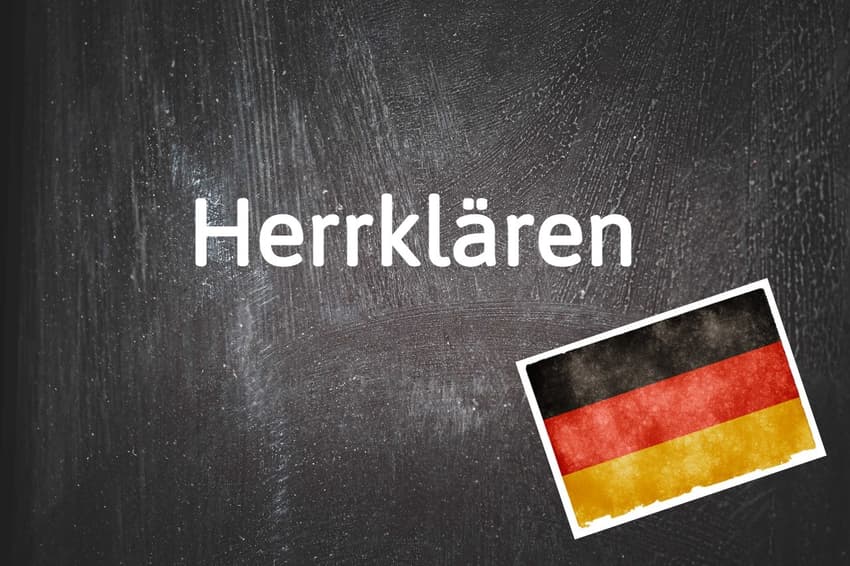German word of the day: Herrklären

Here's why Herrklären is the best German word to never really exist.
This verb is a clever piece of German wordplay, formed from the verb erklären, meaning ‘to explain’, and the noun Herr, which means sir, gentleman or Mr.
Herrklären, as you might have guessed, translates to the colloquial English term ‘mansplaining’, which is when a person (usually a man) is explaining something in a patronising or condescending way to someone (often a woman) who already knows about it.
This verb also gives us the noun die Herrklärung, or ‘the mansplaining’.
As wonderful as this word is, however, it was never widely popular, with its occasional use by German newspapers the only real evidence that it exists at all.
The difference between Herrklären and Erklären might be perfectly clear on paper, but it is much more difficult to hear this difference in conversation.
Because of this, many Germans found it easier to just import the English word into German, and so you are much more likely to hear das Mansplaining than die Herrklärung.
The debate over the use of patronising language in Germany was reignited recently, when a Tagesspeigel journalist chose to describe 41-year-old Foreign Minister Annalena Baerbock as ‘diese junge Dame’ (this young lady’), going on to suggest that she seemed uncomfortable in her environment, and that the political world was not for her. This came as she visited Ukraine during the tense days before Russia’s invasion on February 24th.
OPINION: Germany, we need to talk about sexism

German Foreign Minister Annalena Baerbock may have to deal with mansplaining at times... Photo: picture alliance/dpa | Michael Kappeler
Examples:
Warum herrklärst/mansplainst du meinen Computer? Ich weiß, wie es funktioniert!
Why are you mansplaining my computer? I know how it works!
Dieser Journalist hat gerade Mansplaining gemansplaint…
This journalist just mansplained mansplaining…
Comments
See Also
This verb is a clever piece of German wordplay, formed from the verb erklären, meaning ‘to explain’, and the noun Herr, which means sir, gentleman or Mr.
Herrklären, as you might have guessed, translates to the colloquial English term ‘mansplaining’, which is when a person (usually a man) is explaining something in a patronising or condescending way to someone (often a woman) who already knows about it.
This verb also gives us the noun die Herrklärung, or ‘the mansplaining’.
As wonderful as this word is, however, it was never widely popular, with its occasional use by German newspapers the only real evidence that it exists at all.
The difference between Herrklären and Erklären might be perfectly clear on paper, but it is much more difficult to hear this difference in conversation.
Because of this, many Germans found it easier to just import the English word into German, and so you are much more likely to hear das Mansplaining than die Herrklärung.
The debate over the use of patronising language in Germany was reignited recently, when a Tagesspeigel journalist chose to describe 41-year-old Foreign Minister Annalena Baerbock as ‘diese junge Dame’ (this young lady’), going on to suggest that she seemed uncomfortable in her environment, and that the political world was not for her. This came as she visited Ukraine during the tense days before Russia’s invasion on February 24th.
OPINION: Germany, we need to talk about sexism

Examples:
Warum herrklärst/mansplainst du meinen Computer? Ich weiß, wie es funktioniert!
Why are you mansplaining my computer? I know how it works!
Dieser Journalist hat gerade Mansplaining gemansplaint…
This journalist just mansplained mansplaining…
Join the conversation in our comments section below. Share your own views and experience and if you have a question or suggestion for our journalists then email us at [email protected].
Please keep comments civil, constructive and on topic – and make sure to read our terms of use before getting involved.
Please log in here to leave a comment.